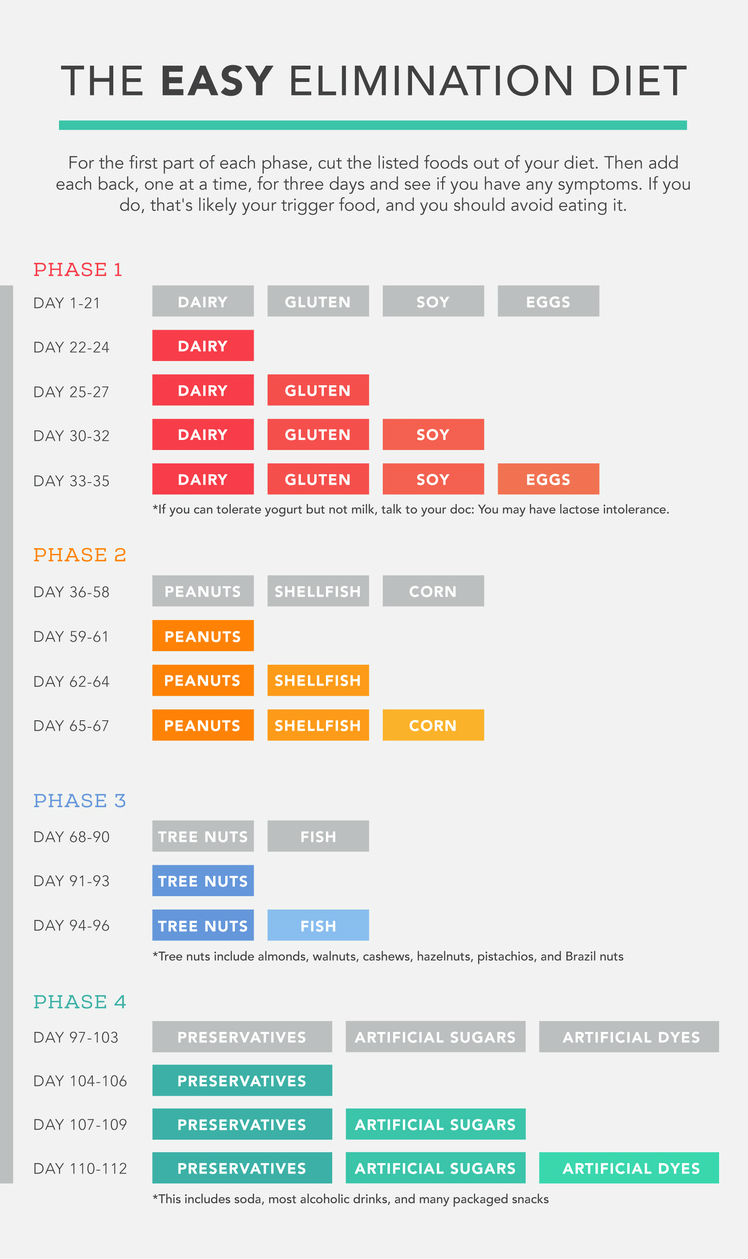How To Do An Elimination Diet For Food Intolerances
An elimination diet still remains the gold standard for identifying food intolerances.
Certain foods are eliminated for a period of time, usually three or four weeks, then specific foods are slowly reintroduced usually in three-day intervals and symptoms are monitored for possible reactions.
There are many versions of an elimination diet that you can follow. An example of a good elimination diet will remove the “big 5” – gluten, dairy, soy, eggs, corn. Other foods include sugar (all forms including alcohol), fish (especially shellfish), pork, beef, chicken, beans/lentils, coffee, citrus fruits, nuts, and nightshade vegetables.
That might sound like a lot, but it leaves plenty of options for a relatively satisfying diet comprised primarily of rice, meat (i.e. turkey, fish, lamb), most fruit, and most types of vegetables.

At the end of the 3-4 weeks of elimination, reintroduce a single food group for one day only and then monitor your symptoms for the next two days.
If you have no observable symptoms, you may try reintroducing another food. You can continue this process for a couple more weeks, reintroducing one new food every few days, until you’ve determined what foods may cause you an issue (if any).
The whole process will take approximately 5-6 weeks and, at the end of the experiment, you’ll have a clear understanding of how your body responds to different foods
What to look for
Pay attention to how you’re feeling using a “food-mood-poop” journal. You should monitor and record your sleep, mood, energy, digestion and bowel habits.
The simplest way is to use a notebook or to download a food journal app on your phone.
- If you like to write things down by hand, use a blank notebook or purchase a daily diary with enough space on each page to record your intake for the day. You can even search online for sample food dairy pages that you can print and use or copy into your notebook.
- You can use an app or an online tracking device if you prefer. Since food journaling has become so popular, there are a variety of good apps to choose from.

Negative reactions can include:
- insomnia
- fatigue
- joint pain and/or inflammation
- skin breakouts or rashes
- headaches
- bowel changes or GI pain
- bloating
- brain fog
- sinus or other respiratory issues
Positive reactions can include:
- more energy
- better sleep
- clearer thinking
- better concentration
- less stressed
- better mood
- less or no pain and inflammation
- less or no digestive issues
- recovery or remission of any disease symptoms
